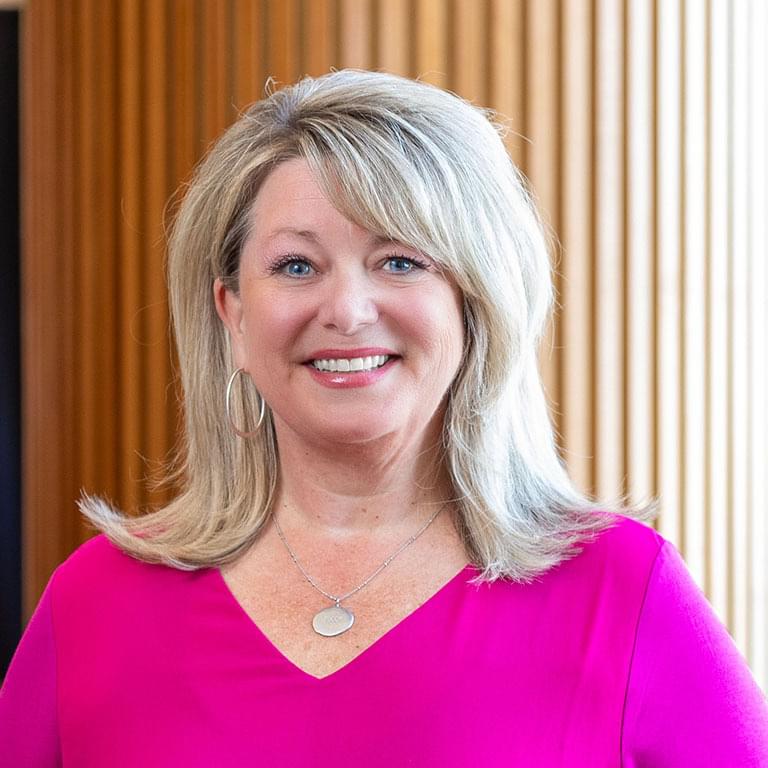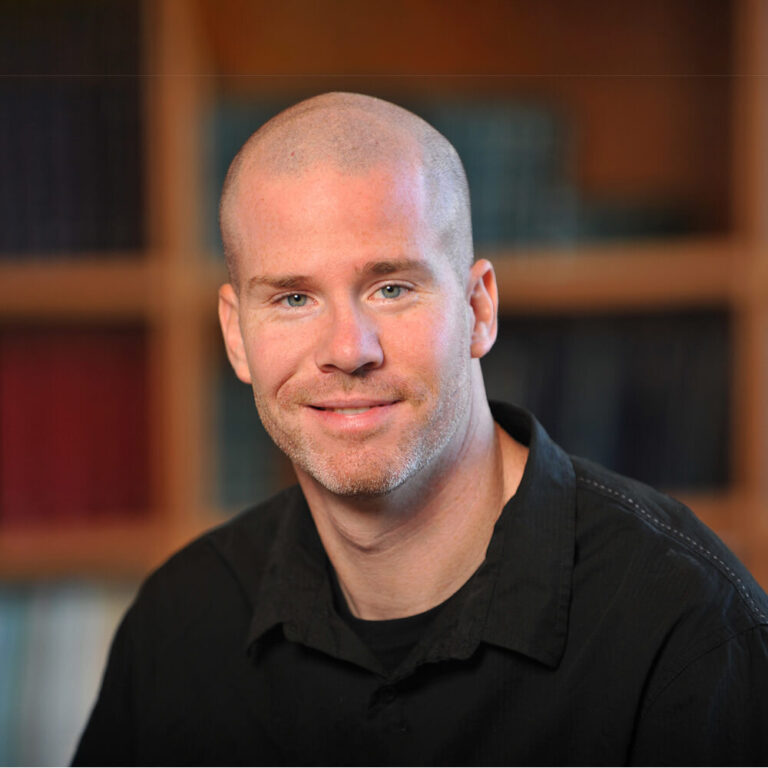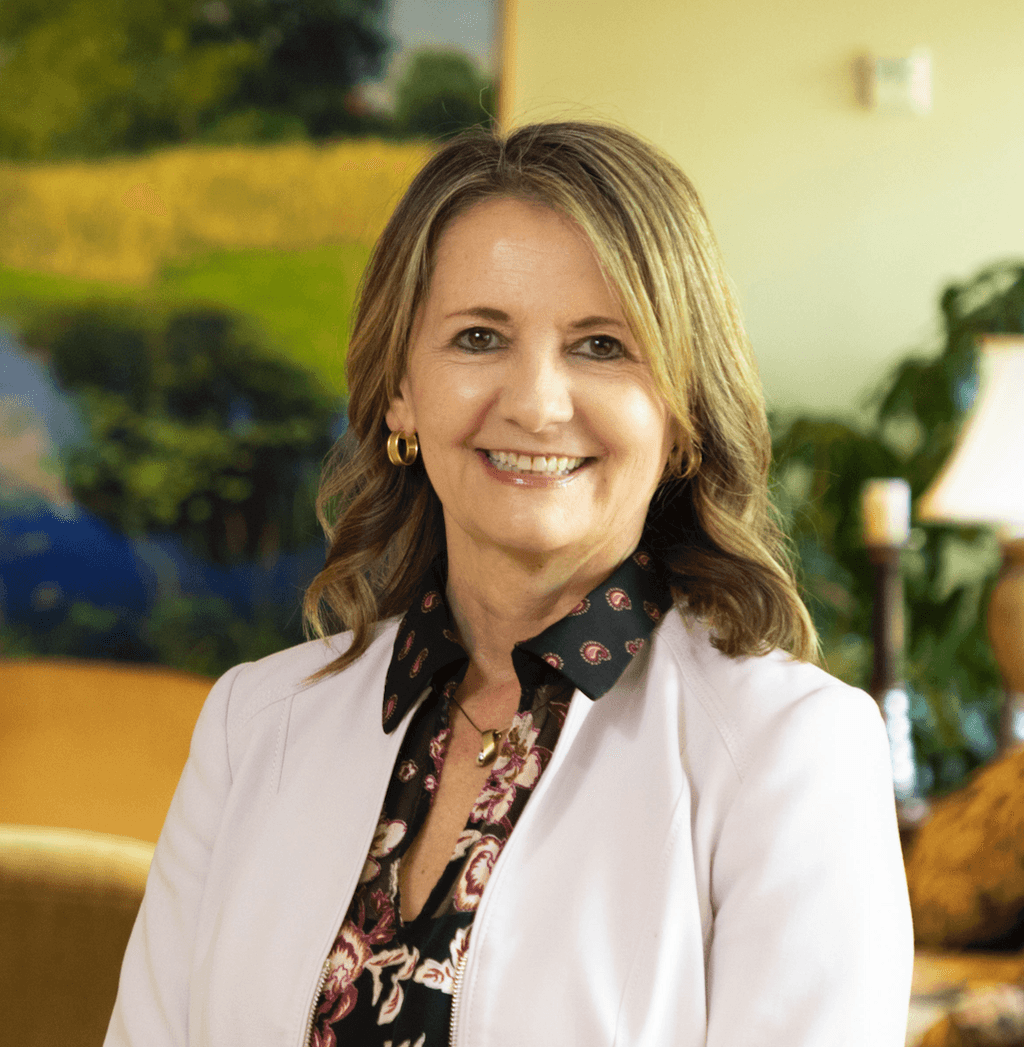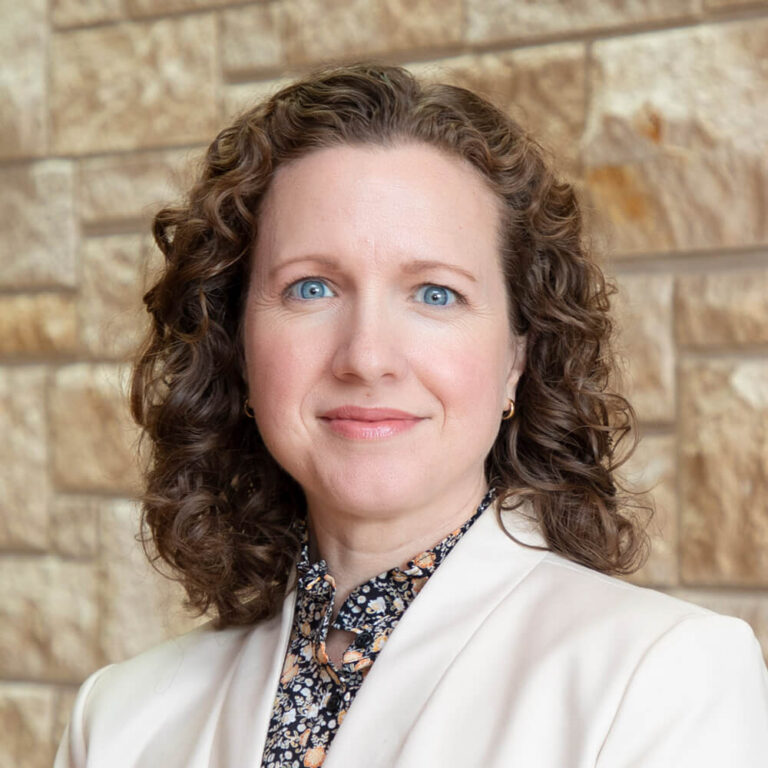
Rachel Green, Ph.D.
Investigator, Howard Hughes Medical Institute
The leadership team at the Stowers Institute is dedicated to fulfilling the mission of our founders by making a significant contribution to human health through world-class research.


Vice President of Finance
B.S., Accounting, Kansas State University
MBA with a finance concentration, University of Missouri-Kansas City
CPA
Kim Chee joined the Stowers Institute in 2021 as the Vice President of Finance. Before joining the Institute, Chee held a variety of finance and accounting roles in multiple large corporations in Kansas City, most recently at Corbion. While at Corbion, Chee was a Finance Director, responsible for the financial and accounting aspects of Corbion North America as well as Risk Management and Corporate Tax. Prior to Corbion, she worked at Grundfos Pumps, Hallmark Cards Inc., and Black & Veatch.
Chee is a CPA with several accomplishments to her name, one of which was being named a 2018 Honoree for CFO of the year from the Kansas City Business Journal. She received a B.S. in accounting from Kansas State University and an MBA with a finance concentration from the University of Missouri-Kansas City. Chee was born and raised in Malaysia.

EVP, Chief Legal and Business Administration Officer
Stowers Resource Management and Stowers Group of Companies
B.A., Drury University
J.D., University of Missouri-Columbia School of Law
Charles German was appointed Co-General Counsel of the Stowers Group of Companies in 2020. Before joining Stowers, Charles was a founding shareholder of the law firm of German May PC. As a trial lawyer, his primary practice areas have been internal and governmental investigations, corporate governance, biotech, capital markets, and professional liability. German served as outside independent counsel for BioMed Valley Discoveries from 2018 to 2019, and is an adjunct professor of corporate litigation at the University of Missouri-Kansas City School of Law.
German earned a B.A. from Drury University and a J.D. from the University of Missouri-Columbia School of Law, and served as the law clerk for Honorable William R. Collinson of the Western District of Missouri. He has served as a director and board chair at The Midwest Innocence Project and the Kansas City Metropolitan Bar Association. He was a founder and chair of the Kansas City Metropolitan Homelessness Task Force, a multi-disciplinary, inter-governmental entity that is now a permanent section of the Mid-America Regional Council. German has also been a board member of Drury University and of the Missouri Lawyers Trust Account Foundation. His past awards include the LAWMO Coburn Community Service Award, the KCMBA Deans of the Trial Bar, KCMO Legal Leader of the Year, Missouri Lawyers Media ICON Award, and the Downtown Council Urban Hero Award.

Investigator and Dean of the Graduate School
Stowers Institute for Medical Research
Genetics and Genomics, Evolutionary Biology, Molecular and Cell Biology
Genetics; Laboratory Rotation; Thesis Laboratory
Jennifer Gerton, Ph.D., is a molecular and cellular biologist focusing on chromosome dynamics and behavior during cell division. She joined the Institute in 2002 and currently serves as an Investigator.

Investigator and President of the Graduate School
Stowers Institute for Medical Research
Development and Regeneration, Genetics and Genomics, Evolutionary Biology, Systems Biology
Evolution and Model Systems; Laboratory Rotation; Thesis laboratory
Matt Gibson, Ph.D., is a developmental biologist and an Investigator at the Stowers Institute. Gibson joined Stowers in 2006 and was named President of the Graduate School in 2024 after serving as Dean since 2019.

Vice President of Regulatory Affairs
Stowers Institute for Medical Research
M.S. Industrial Hygiene, University of Central Missouri
Tonyea Inglis holds an M.S. in industrial hygiene from the University of Central Missouri (UCM). She is a member of the American Industrial Hygiene Association (AIHA) and served as president of the Mid-America AIHA Chapter in 2007. She is currently chair of the UCM Industrial Hygiene Advisory Board in the Department of Occupational Risk and Safety Sciences, College of Health, Science, and Technology. Prior to joining the Institute, Inglis worked in the field of Environmental Health and Safety (EH&S) in both the pharmaceutical and healthcare sectors, working for Hoechst Marion Roussel, Oread Laboratories, Kaiser Permanente, and ChemSyn Science Labs, a division of Eagle Picher Technologies.
Inglis joined the Stowers Institute in 2001 as Safety Specialist and was promoted to Manager of Environmental Health and Safety in 2003. In 2007, she was appointed Manager of Research Regulations and EH&S. This expanded role included oversight of regulatory compliance. In 2011, she transitioned to Head of the department and in 2019 became Director of Research Regulations and EH&S.
In 2024, Inglis was appointed Vice President of Regulatory Affairs. In this role, Inglis leads EH&S, Quality and Regulatory Systems Team, overseeing regulatory compliance and legal adherence.

VP, Chief Global Communications Officer
Stowers Resource Management
B.A., English Literature and Economics, University of Virginia
Jennifer Pawlosky joined the Stowers Institute for Medical Research in 2021. She first served as Vice President of Communications and Chief of Staff for the Office of the Executive Director and now leads Global Communications strategy for the Institute. With 30 years of experience in communications, public relations and marketing, Pawlosky has focused on science communications for the past 17 years. Prior to joining the Institute, Pawlosky was Executive Director of Communications at the Allen Institute in Seattle, Washington, where she oversaw internal and external communications strategy. Prior to her time at the Allen Institute, Pawlosky was responsible for development communications and marketing at Fred Hutchinson Cancer Research Center. She has also led communications and marketing efforts for Arthur Andersen and the National Trust for Historic Preservation.
Pawlosky received a B.A. degree in both English Literature and Economics from the University of Virginia in Charlottesville. A former board member for the Association for Independent Research Institutes, she currently serves on the government affairs committee and strategic communications committee for the organization.

President, Chief Scientific Officer, and Investigator
Stowers Institute for Medical Research
Development and Regeneration, Genetics and Genomics, Evolutionary Biology, Molecular and Cell Biology
Cell Biology; Evolution and Model Systems; Laboratory Rotation; Thesis Laboratory
Alejandro Sánchez Alvarado, Ph.D., is the President and Chief Scientific Officer of the Stowers Institute. Alejandro joined the Institute in 2011, was named its Scientific Director in 2019, and named Executive Director and Chief Scientific Officer in 2021. In 2023 he was named President and Chief Scientific Director.

EVP, Chief People Officer
Stowers Resource Management
B.A., Business Administration and Political Science, Westminster College
MLA, Philosophy, Baker University
George Satterlee joined the Stowers Institute for Medical Research in 2016 after serving in positions at two Kansas City area companies, Missouri Bank and Hallmark Cards, Inc. While at Missouri Bank, Satterlee served as Executive Vice President and Chief Administrative Officer and was responsible for the company’s human resource, organizational development, culture, strategic planning, and marketing efforts. Prior to his 17 years at Missouri Bank, Satterlee spent 15 years at Hallmark Cards, where he held a number of significant human resource positions within the manufacturing, corporate staffing, and field sales divisions.
Satterlee received a B.A. in business administration and political science from Westminster College and an MLA degree in philosophy from Baker University. He attended the University of Pennsylvania in Philadelphia where he completed a three-year program in the Stonier Graduate School of Banking and the Wharton School Executive Leadership Program. Some of his civic activities include serving on committees for the Greater Kansas City Chamber of Commerce and the Shawnee Mission Education Foundation, serving as an advisor to the Children’s Center for the Visually Impaired, and serving as a mayoral appointee on the Kansas City and Vicinity Workforce Investment Board of the Full Employment Council.

Scientific Director
Stowers Institute for Medical Research
Molecular and Cell Biology, Neuroscience, Systems Biology
Neuroscience; Laboratory Rotation; Thesis Laboratory
Kausik Si, Ph.D., a developmental neuroscientist, is the Scientific Director for the Stowers Institute. Si joined the Institute in 2005, was appointed Associate Scientific Director in 2019 and Scientific Director in 2021.

Cell Biology; Genetics
After receiving a dual B.A. in chemistry and mathematics from William Jewell College in Liberty, Missouri, in 1999, Slaughter taught science and math before pursuing his graduate work at the University of Kansas. There he studied the biophysics of a calcium signaling protein in the lab of Carey Johnson, Ph.D., receiving a Ph.D. in chemistry in 2005. Following this, he pursued a postdoctoral fellowship in the lab of former investigator Rong Li, Ph.D., at the Stowers Institute. In 2010, he transitioned to a role as a Research Advisor, collaborating with Stowers Investigators on adapting microscopy methods for use in a wide range of research organisms. In 2015, Slaughter became Co-Head of the Microscopy Center, then Co-Director of Microscopy, Imaging, and Big Data in 2019. In 2022, he was appointed Senior Director of Research Support overseeing the various Technology Centers, including Microscopy, Sequencing, Proteomics, and Model Research Organisms, teaming with the Scientific Director and the Chief Scientific Director to oversee scientific technology at the Institute. In 2024, Slaughter was promoted to Vice President of Research Operations with expanded responsibility overseeing the scientific operations teams across the Institute. He currently serves as Chief Operating Officer.

Chair, Board of Directors
Stowers Institute for Medical Research
Jonathan Thomas is the President and CEO of American Century Investments. He serves as Chair, Board of Directors of the Stowers Institute for Medical Research; Chair, CEO and President of Stowers Resource Management, Inc; Chair of BioMed Valley Discoveries, Inc.; and Chair of American Century Investments.

Chief Information Officer
Stowers Institute for Medical Research
B.S., Business and Computer Science, Karlsruhe University of Applied Science in Germany
Evelyn Travnik, who joined the Stowers Institute in 2023, comes with more than 20 years of experience leading strategy and implementing enterprise-level digital science and technology solutions in biotech, life sciences, sustainable agriculture, and healthcare. Her extensive background includes roles such as Principal Investigator and Chief Information Officer for the Novo Nordisk Foundation Center for Biosustainability and VP of Digital Science and Technology and Chief Information Officer for Joyn Bio, a joint venture between Bayer and Ginkgo Bioworks, focused on engineering strains for nitrogen fixation.
As the Senior Director of Information Services at Genomatica, Evelyn was instrumental in advancing the engineering of cell factories for the production of bio-chemicals. In addition, her leadership as a global management consultant and Senior Director of Engineering has resulted in the creation of innovative enterprise and commercial software products.

Vice President and Deputy General Counsel
Stowers Resource Management
B.S., English, Birmingham-Southern College
J.D., University of Virginia School of Law
Joselyn Verschelden, J.D., first joined the Stowers Institute as Associate General Counsel in July 2021, and was appointed Vice President and Deputy General Counsel in August 2022. Prior to joining the Institute, Verschelden held the position of career law clerk for the Honorable Stephen R. Bough, of the United States District Court, Western District of Missouri. From 2018 to 2020, she also served as a member of the adjunct faculty at the University of Missouri-Kansas City School of Law where she taught Judicial Seminar. Preceding her time with Judge Bough, she worked at the firm of Rouse Hendricks German May, P.C.
Verschelden attended Birmingham-Southern College where she graduated cum laude with a B.S. in english. After receiving her juris doctorate in 2003 at the University of Viriginia School of Law, she clerked for the Honorable Ronald R. Holliger of the Missouri Court of Appeals, Western District.

Associate Investigator and Vice Dean of the Graduate School
Stowers Institute for Medical Research
Development and Regeneration, Genetics and Genomics, Evolutionary Biology, Molecular and Cell Biology
Genetics; Laboratory Rotation; Thesis Laboratory
SaraH Zanders, Ph.D., a geneticist, joined the Stowers Institute in 2016 and is an Associate Investigator. In 2019, she became the first Vice Dean of the Graduate School of the Stowers Institute for Medical Research.